| |
The
Second Silo (Actually silo #1)
Practiced
as we were at dismounting a watercraft as it bobbed about, we were more
adept at our second "landfall" on silo cribwork. No
cameras lost, no one got dunked.
|
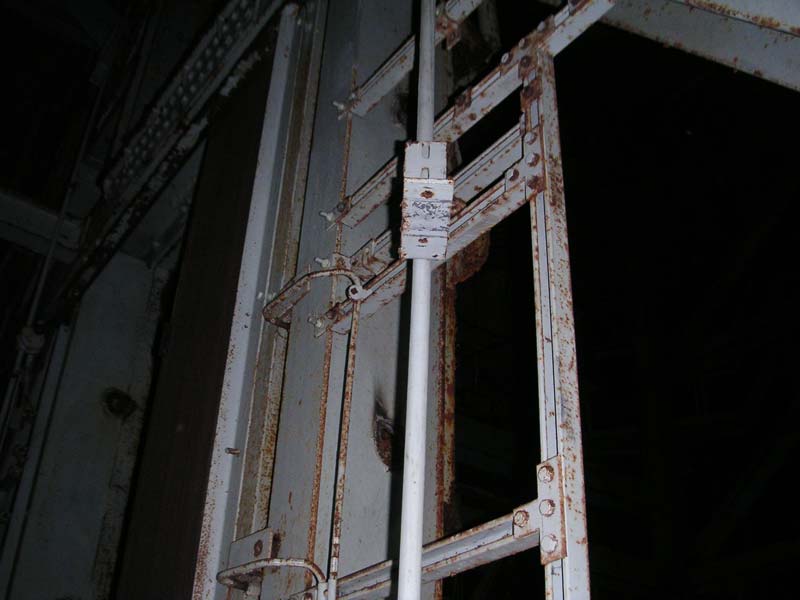
|
|
Just
inside the silo, looking at some strut and piping as we
survey the best route to get up onto the
cribwork.
|
|
This
silo was much like the first and we spent a little less time kayaking
about on the water's surface before scrambling up the cribwork, eager to
see what surprises might lurk above.
|
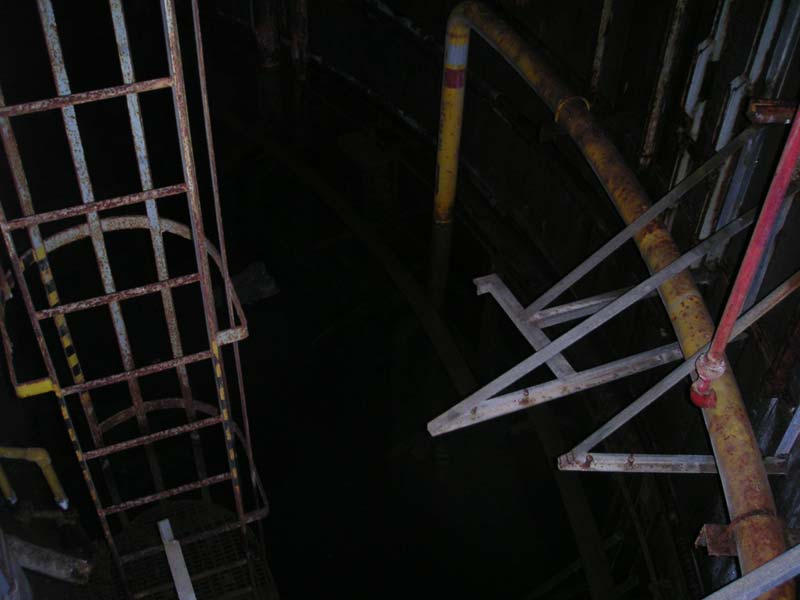
|
|
Gaining
altitude. Thanks to the same ladder we were able
to reach the catwalk where the going was easy.
Yellow pipe is the RP-1 line leading to the fuel crib.
|
|
Looking
quite similar in its disposition, the lower (relative to the surface of
the water anyway) platforms and catwalks appeared largely the same as
those in silo #3, but as always there were small details to draw the eye
of two curious explorers like ourselves.
|
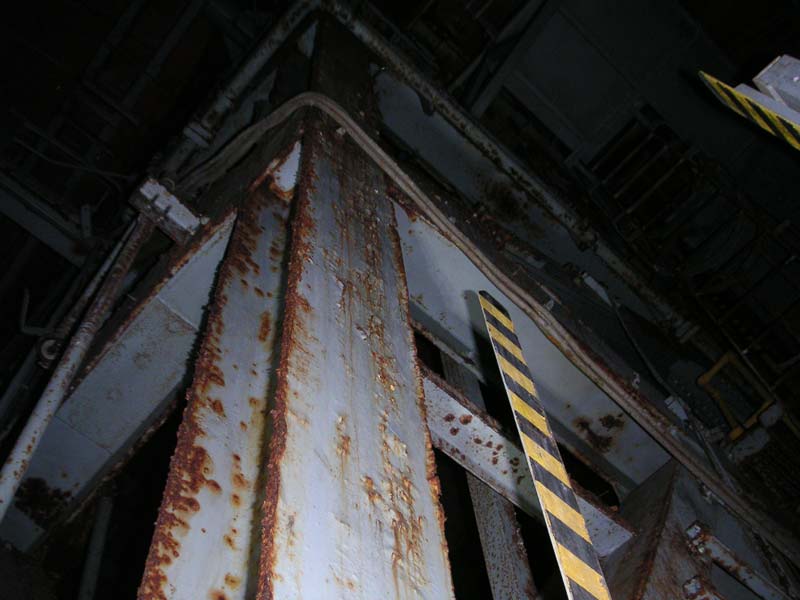
|
|
Looking
upward at one corner of the cribwork, still perhaps 40
feet below the surface at this point.
|
|
Exploring
on our own, Walter and I clambered about at random looking over the
massive structure of the cribwork searching for interesting
details. The fear of heights was long gone, this was entering
obsessive diversion territory. No time for concern about one's
health and safety when there's missile silos to be explored!
|
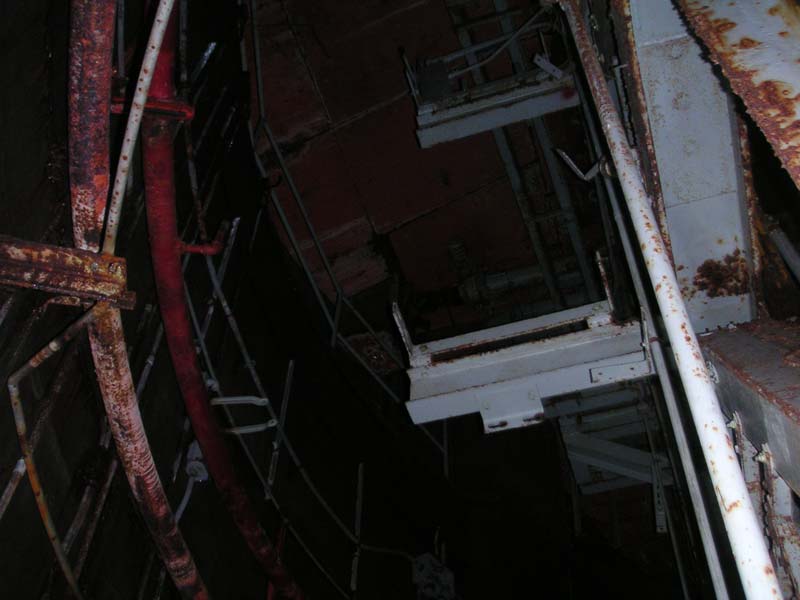
|
|
Hydraulic
and firewater piping follow the curve of the silo's 40'
diameter as I look up at the inside of the silo cap and
the catwalk level far above.
|
|
This
silo was salvaged to a similar degree as the other, but as always, in
slightly different ways and stages. Mostly it was just as we had
seen in the other silo, but as we would soon find, there were some
intriguing features waiting, hidden in the damp dark of silo #1.
|
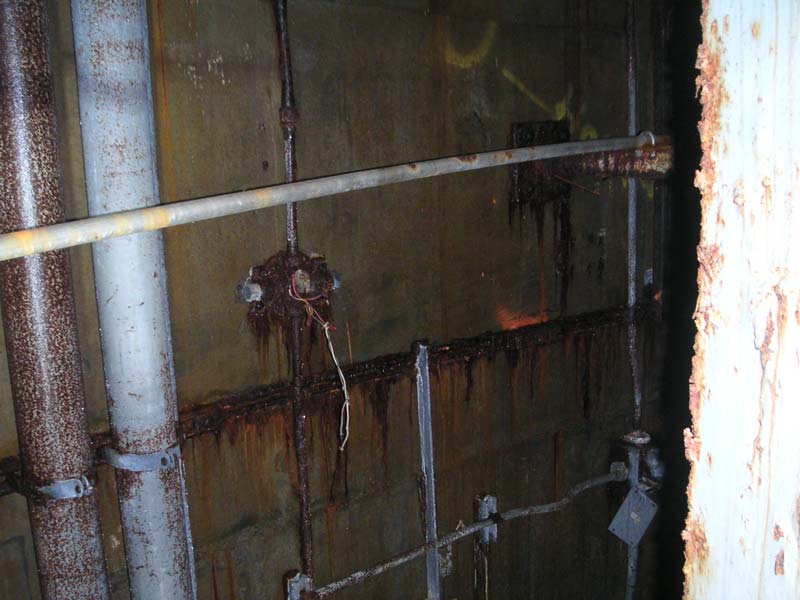
|
|
Very
large electrical conduit and other fixtures lining the
walls of the silo.
|
|
|
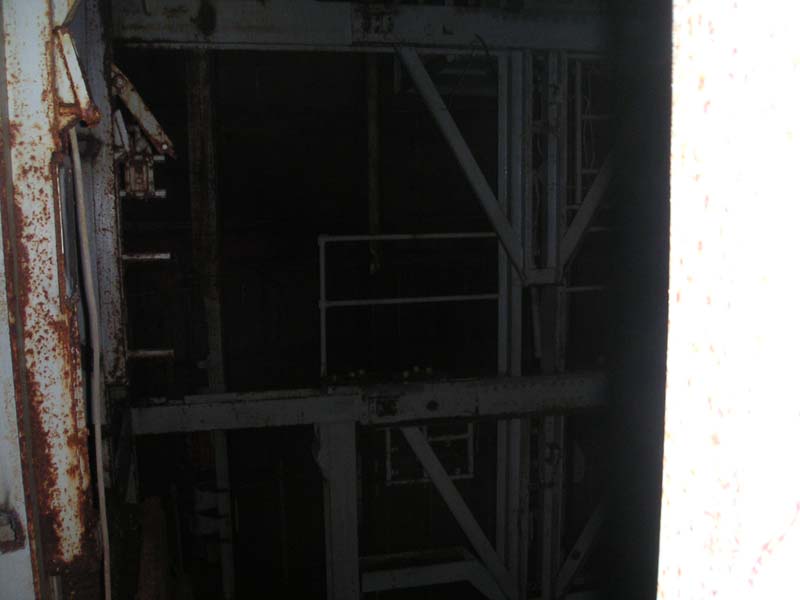
|
|
At
about 120' up the cribwork, a box with a key switch can
bee seen on the left side, likely a control station for
fold-down work platforms.
|
|
Although
we were cold
and damp from our kayaking to the silo, the long day of walking and clambering had begun to slow us down a bit, but our
enthusiasm for exploration pushed us ever higher.
|
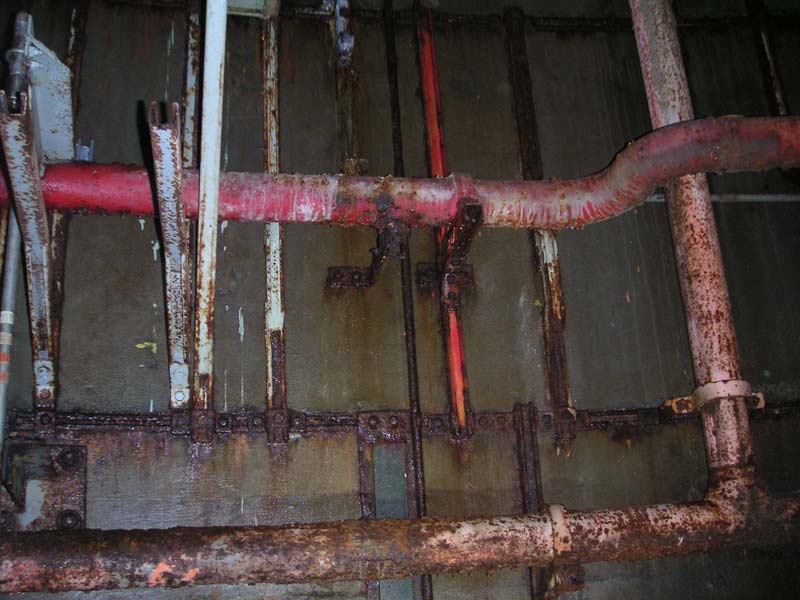
|
|
Fire
water and hydraulic piping on the silo walls in bad need
of corrosion control.
|
|
This
silo was less beat up than the other and I had to wonder if it
was the first to be salvaged or the last. I mean, did they take
their sweet time here, doing a thorough and careful job and then later
when time became tight, they beat the hell out of the other silo in a
mad rush to finish?
|
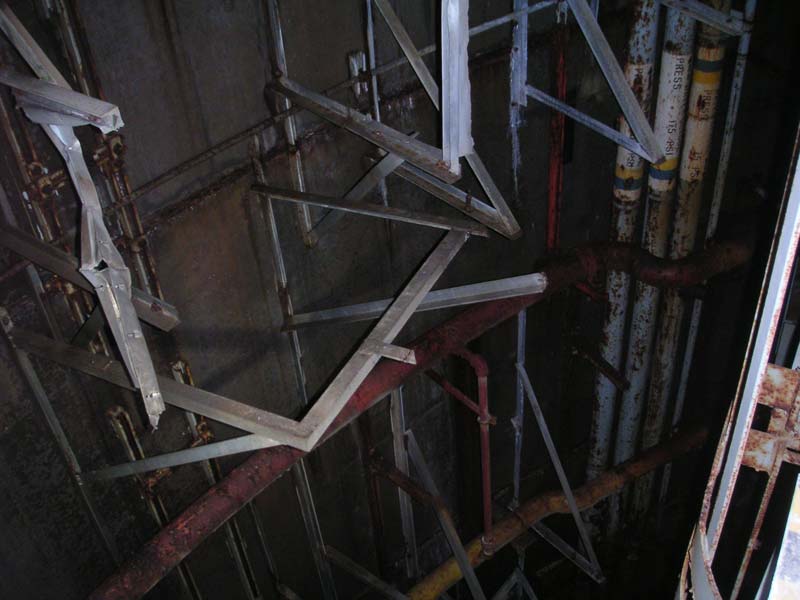
|
|
Remnants
of ductwork and more plumbing for fire suppression,
hydraulics and fuel for the missile as viewed from about
20 feet above the water level.
|
|
High
up among the crunchy, rust flake covered platforms, Walter spied
something brightly-colored peeking from between the steel girders across
the silo. He homed right in on it as I fiddled with my onerous
burden of cheap, crappy camera gear and bulky lights, oblivious as
usual.
"Pete!"
"What?"
I hollered back.
"Look
at this."
That
was all I needed to hear. I was on the move, gear rattling,
throwing off my balance as I headed up to the catwalk where Walter was
inspecting something that just had to be fascinating.
|
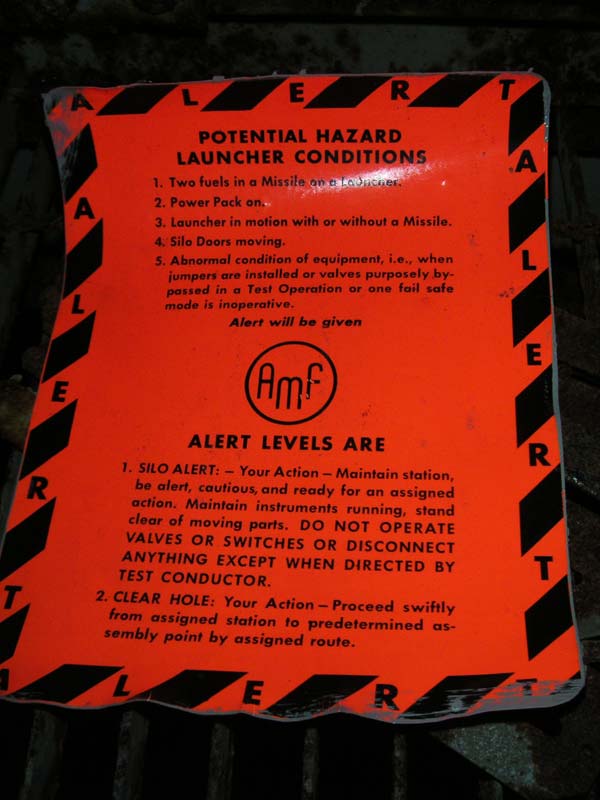
|
|
We
spotted a couple of these brightly-colored warnings
posted at various levels in the silo.
"Proceed
Swiftly" always makes me chuckle inwardly as I
imagine rapidly distancing myself (not unlike a rocket)
from whatever mayhem might be occurring to warrant the
"CLEAR HOLE" alert level.
|
|
I
arrived at the cramped platform where Walter was leaning in to read a
bright orange placard and chuckling to himself.
"What
is it? I asked, shouldering my giant boat anchor of a flood light.
"Hazard
conditions on a big sticker. Take a look."
I
leaned in, I'd never seen one of these before-- 'course, I'd never seen
cribwork up close before either. "This is great. I love
stuff like this. I have to get a few pictures of it."
Later
on, we'd notice a couple more of these in far-reaching areas of the silo
and down by the waterline as well. It need not be said, if the
CLEAR HOLE alert was given, I'd not tarry too long in the silo to see
what was wrong.
|
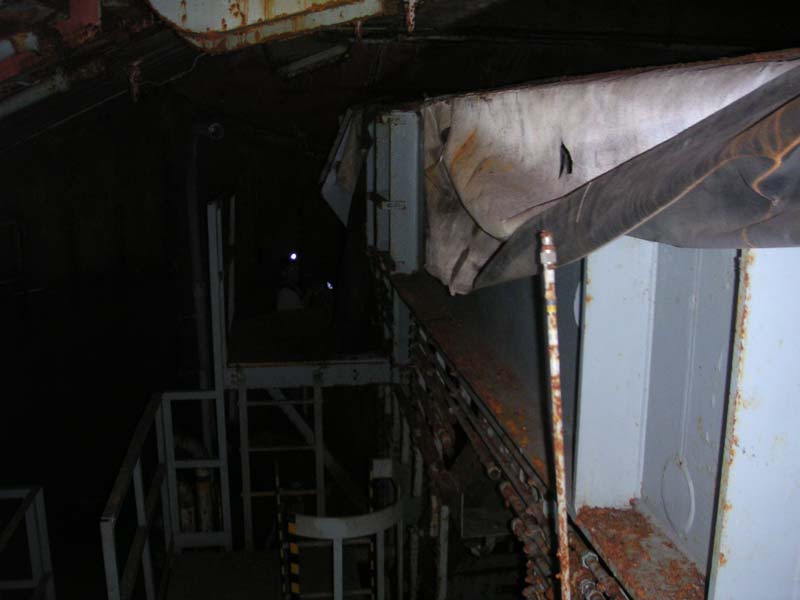
|
|
Above
the catwalk level: the very top of the cribwork showing
the damaged environmental seal that once bridged the gap
between the silo cap and the cribwork.
|
|
Once
again, there was no elevator motor or hydraulic rams at silo #1,
something I was deeply wishing for as we entered this last chance
launcher, but no matter, this was a Cold War nuclear missile silo-- I
was anything but disappointed to be there, you can be sure of that!
|
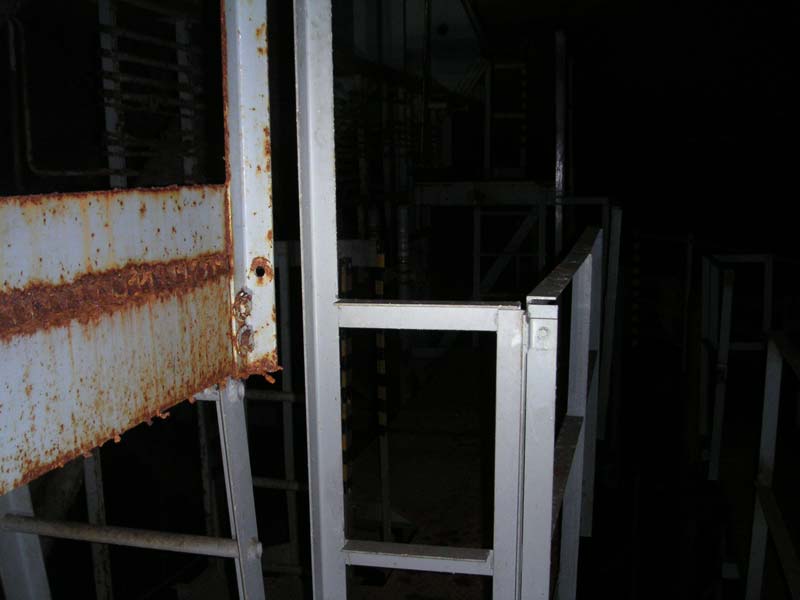
|
|
Some
of the upper service platforms that cover the topmost
portions of the cribwork. Most of these platforms
probably existed chiefly to provide access for
lubrication and repairs, while others looked as though
they were required simply to maneuver around equipment
up at the top.
|
|
|
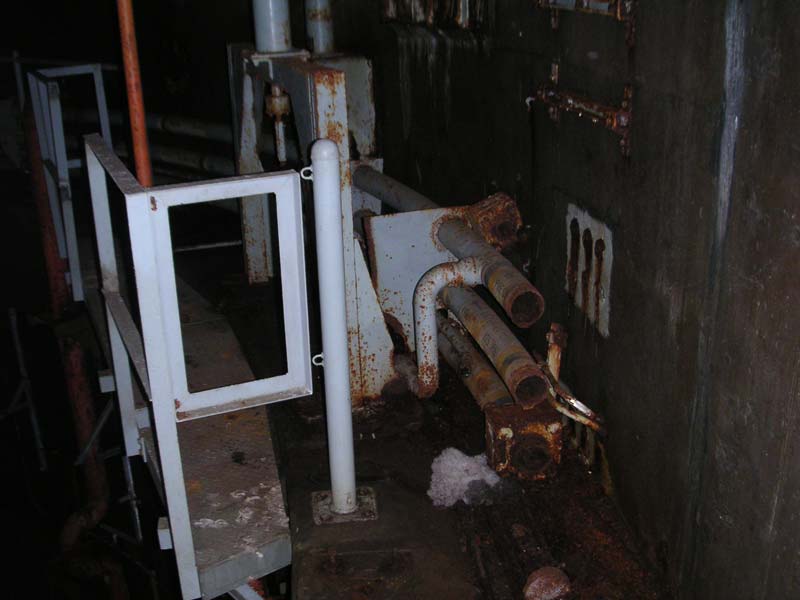
|
|
Back
on the catwalk: interrupted hydraulic plumbing for the
silo doors.
|
|
|
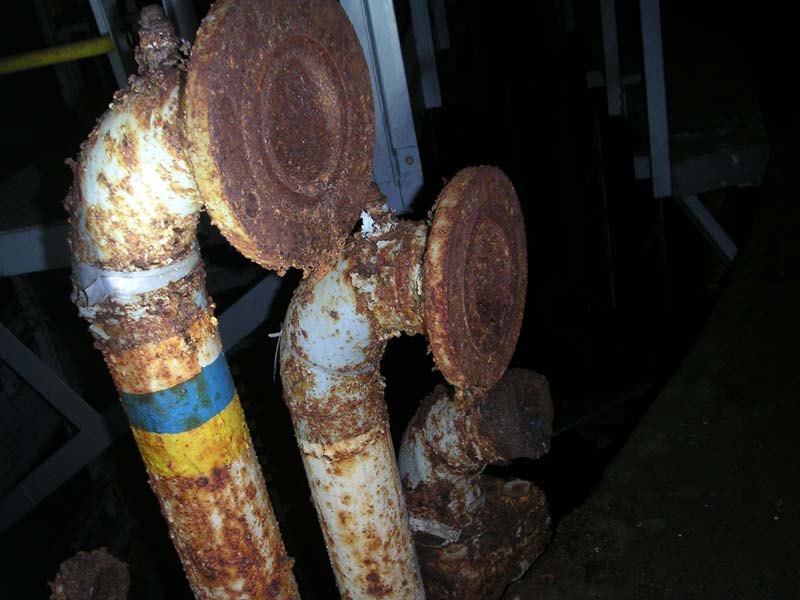
|
|
A
twin set of flanged 90's-- more hydraulic lines for the
silo doors, looking rather Dr. Seuss as they rise
over the lip of the silo.
|
|
The
catwalk level was much like the other launcher and those I'd seen at
Lowry 724-C in Colorado: the same piping, the same flanges, hoses and
pneumatic lines and so after a quick look around, I concentrated at
checking out the cribwork more closely.
|
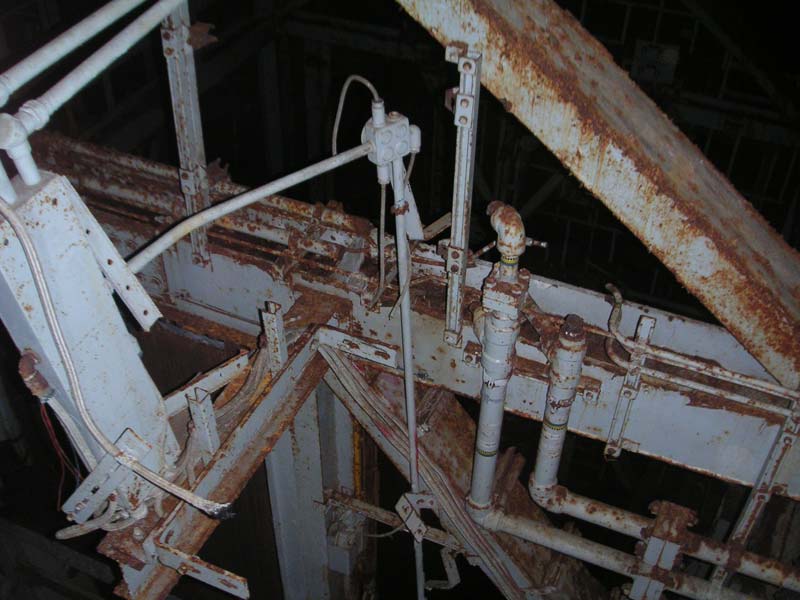
|
|
Looking
down from the catwalk level: all steel and
hydraulics. This paint color will forever stand
out in my mind. To my color blind eyes it appears
blue/gray.
|
|
As
much as I'd love to play these upper levels up, they were very similar
to launcher #3 in most respects. I found them fascinating but for
you... well, results may vary.
|
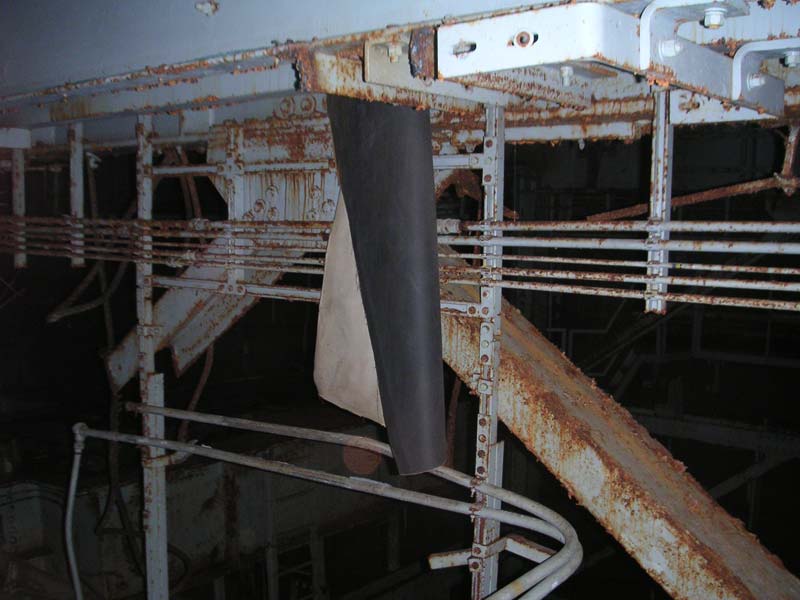
|
|
A
devastated environmental seal hangs as a mere
tatter. This very heavy rubberized fabric once
protected the inner areas of the silo from rain and snow
when the doors were open.
|
|
|
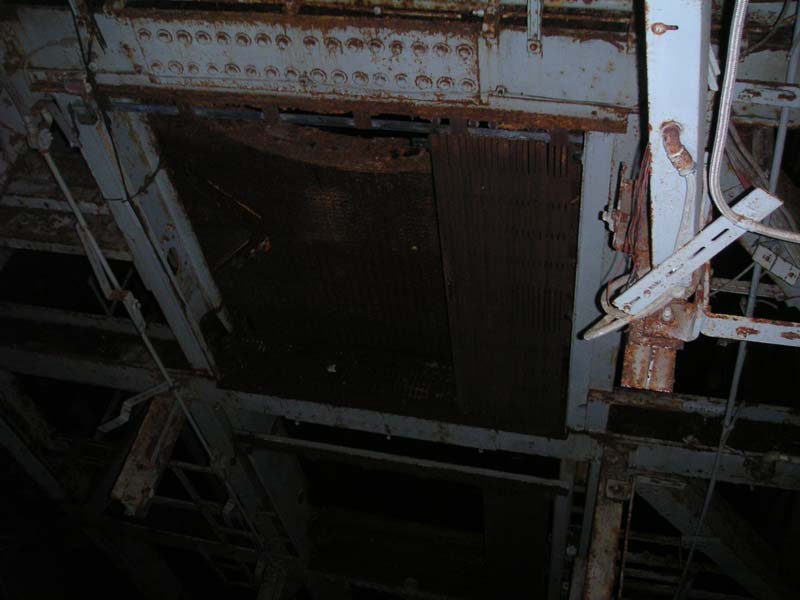
|
|
Accordion-style
elevator door in the upper levels of the silo cribwork.
|
|
|
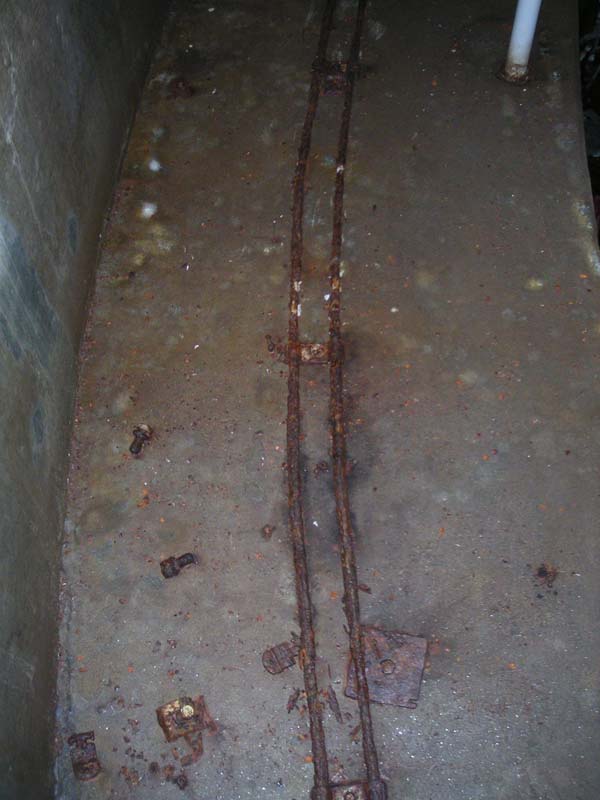
|
|
Utility
air or small hydraulic lines ringing the silo catwalk
level.
|
|
|
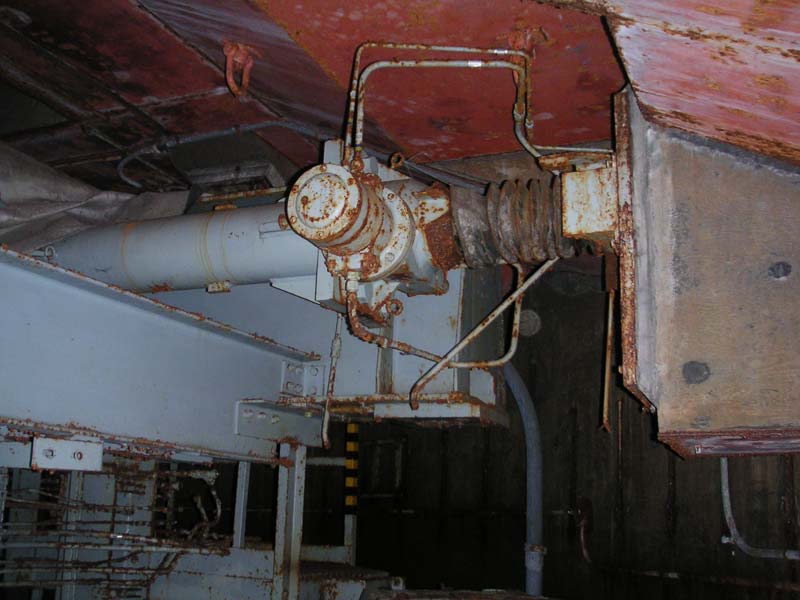
|
|
Lateral
crib lock seen from the catwalk level
|
|
As
before, I could not quit gawking at the giant coil springs supporting
the motor elevator platform. I spent way too much time around
these things.
|
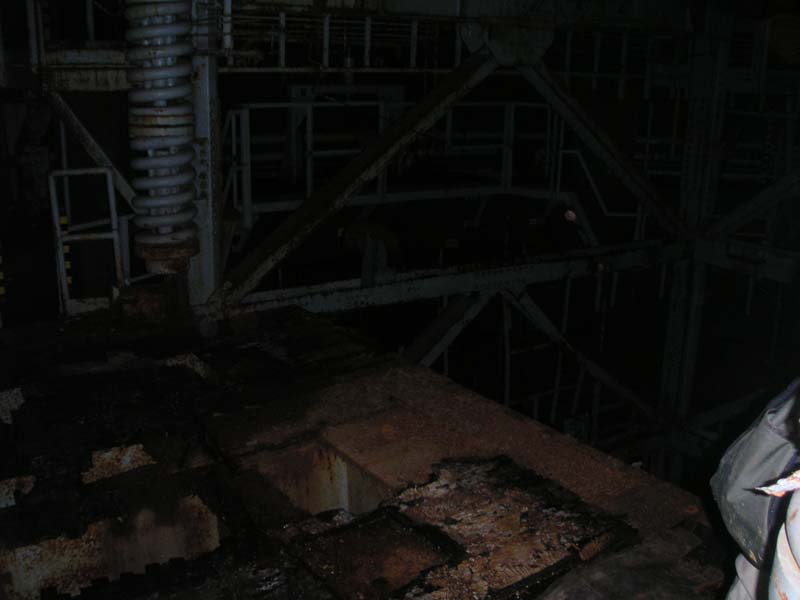
|
|
Here
on the launcher elevator motor platform, the giant
suspension system of insanely heavy coil springs can be
seen again. I still can't get over just how massive
these things are!
|
|
|
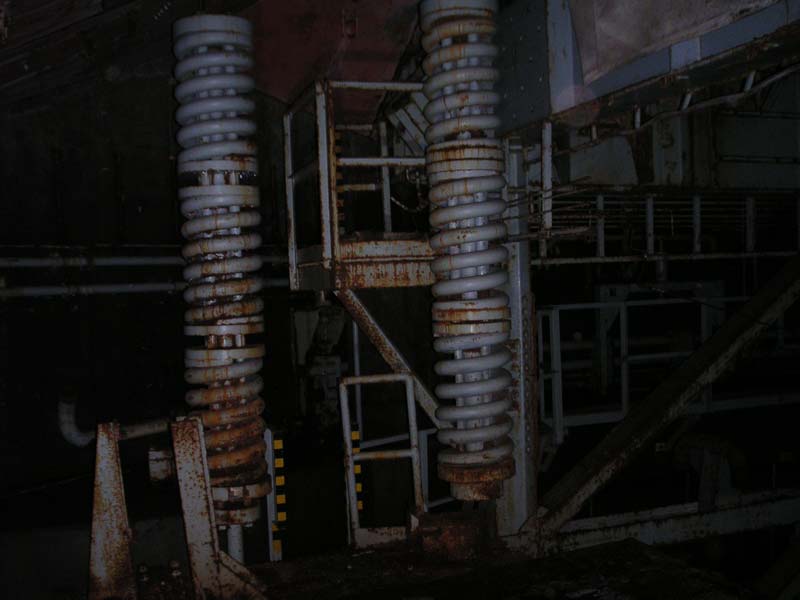
|
|
Both
springs at one side of the launcher elevator motor
platform. In the background, an upper maintenance
platform can be seen high above just about any other
space accessible within the silo.
|
|
As
I trod lightly about on the platform, I saw a remote service platform
about 7 or 8 feet above the catwalk level. It is visible in the
upper middle of the photo above. There was at least one other
platform (not shown, sorry) that we couldn't figure out how to get to at
all; we guessed that most likely it was accessed from the surface when
the doors were open.
|
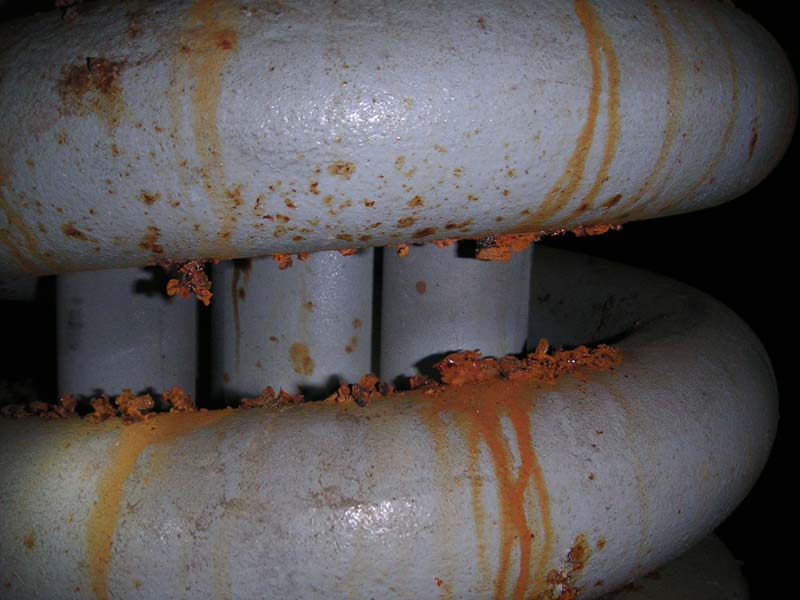
|
|
Yes,
more of the elevator platform springs.
|
|
|
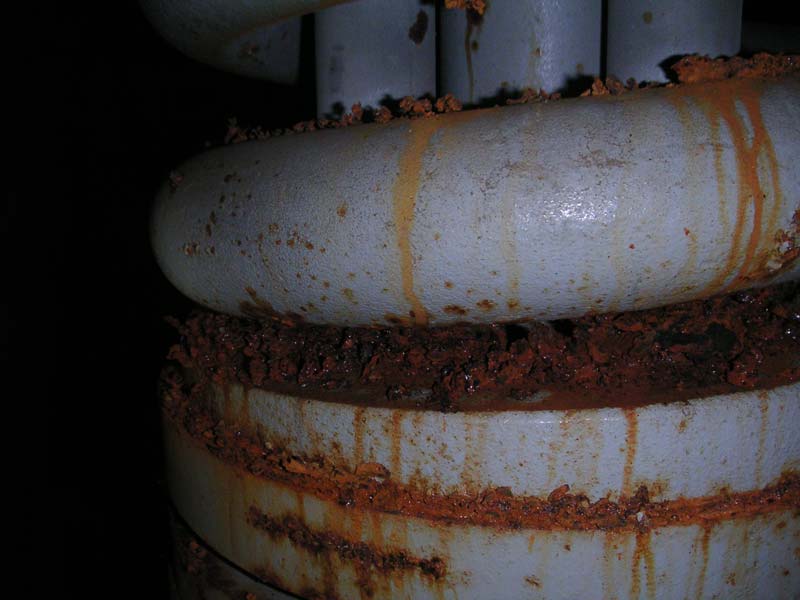
|
|
Last
one, I promise.
|
|
At
launcher #3, one of the four spring assemblies was missing, having been
cut out and hauled away. Here at silo #1, all four springs were
still present.
|
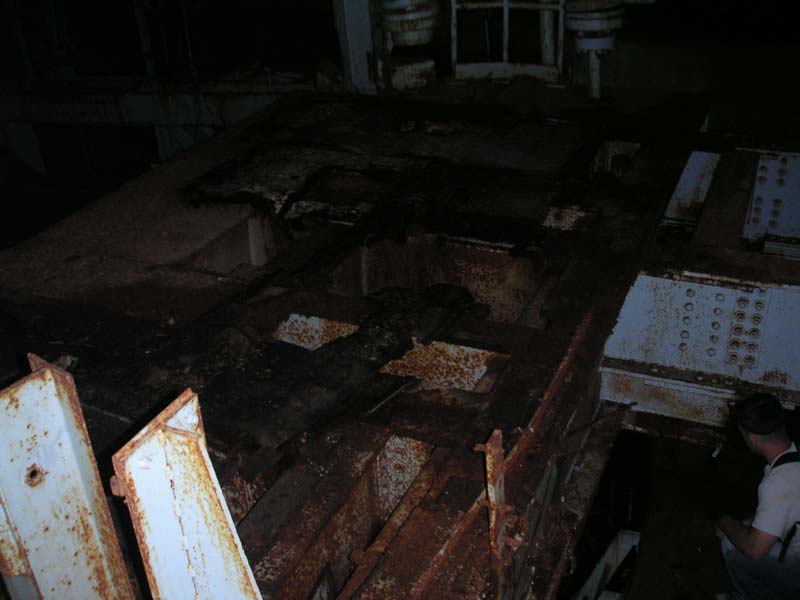
|
|
Sweeping
view of the barren launcher elevator motor
platform. Some so-and-so took the soddy motor out
so I never got to see it. I'd go nuts if I went
into a silo and actually found one in
place! Sadly, I am almost certain this is not
possible.
|
|
My
hopes were dashed once more as the motor platform was revealed to be
just as barren as it had been in silo #3. I wonder if these motors
found new life performing some useful work somewhere, or if they were
simply rendered down to their most valuable metal components and sold as
scrap.
If
in fact the motors did see use again (which I think is unlikely-- I'm
just guessing here, mind you-- because a hydraulically-powered
elevator motor seems rather a rare bird. Where would it
find a ready home for service?) I wonder where exactly that might
be. As silo-lift missile configurations (where the missile was
lifted via an elevator system such as in the Titan I configuration) had
already been phased out of future designs in favor of faster, simpler*
and more reliable designs like the Titan II in-silo launch configuration
(silo door flies open, pre-fuelled missile launches within seconds from
within the protective confines of the silo) it is hard to imagine where
these motors might have migrated to useful service once having been from
the silos' wombs untimely ripped.
*
Simpler in terms of
operation and maintenance, not necessarily engineering.
|
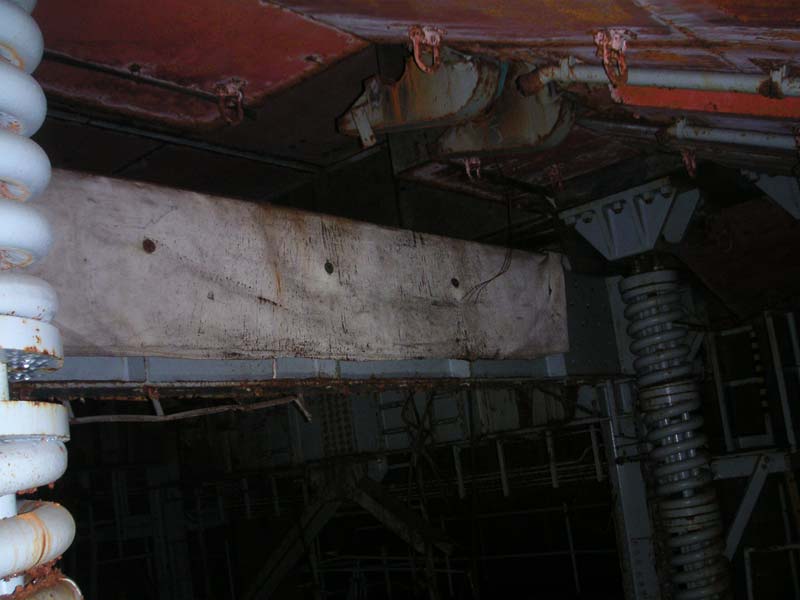
|
|
Looking
up at the pivot point which once held the door
hydraulics for one leaf of the silo doors. The
heavy canvas of the weather seal is still largely
intact.
|
|
|
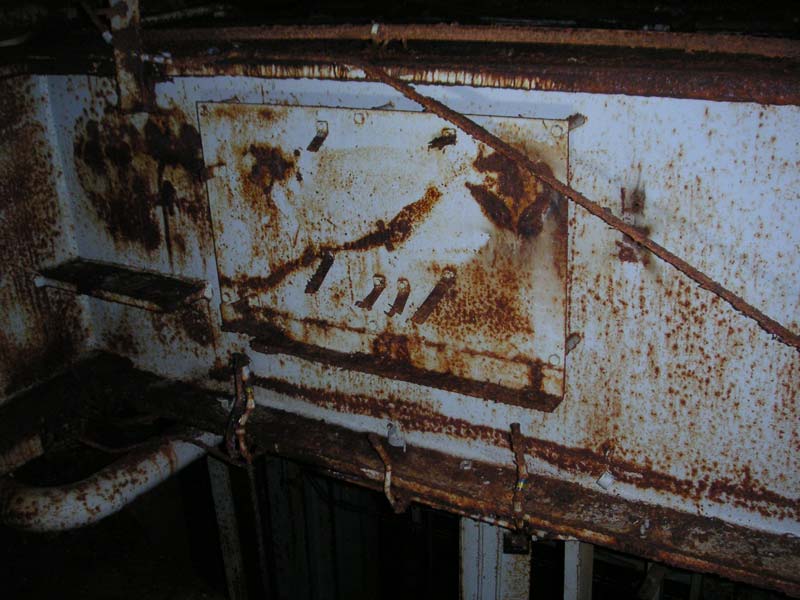
|
|
Behind
the launcher elevator motor platform. Those beams
are about two feet tall!
|
|
There
were other features to draw my attention however; the curious stub-rail
latches and the attendant counterweight rail and locking mechanisms were
interesting to speculate about (we were completely ignorant as to their
various functions at the time) as we clambered over and under the motor
platform to appreciate them.
|
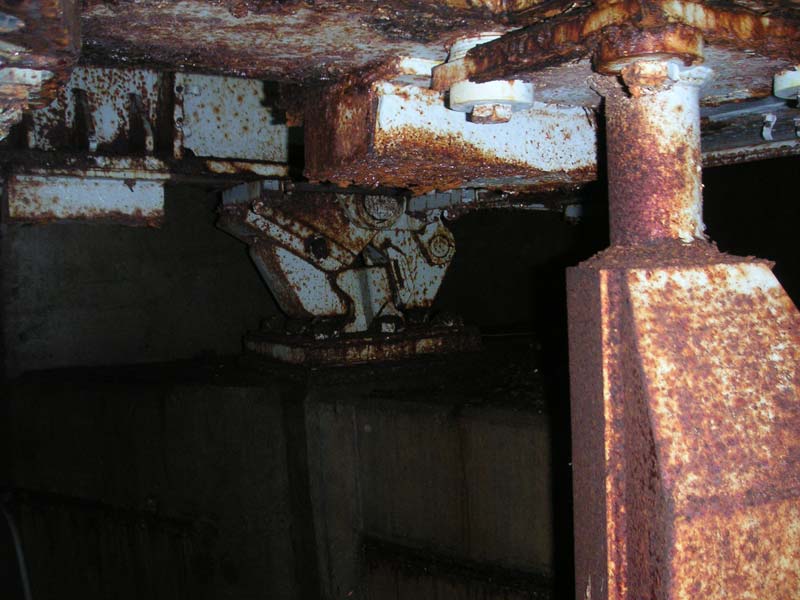
|
|
The
iconic stub rail (at right) and drive platform to silo
wall lock (background).
|
|
|
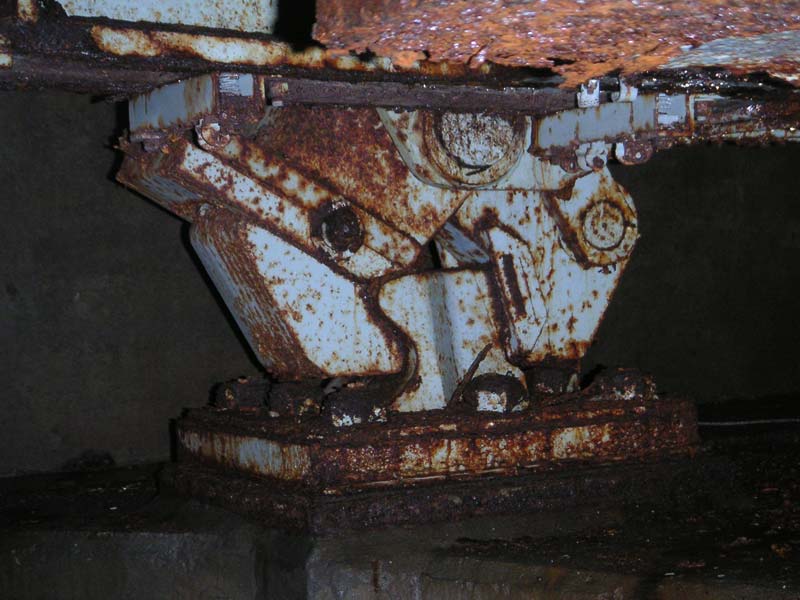
|
|
A
closer peek at those crazy platform-to-silo-wall
locks. These things are just huge. Your head
would fit easily in those jaws. (I would suggest not
putting your head in there however)
|
|
Once
again, I couldn't resist heading down to the shaky little service
platform underneath the motor platform. There were the
guide pins again, only this time they held a signature of sorts-- left
decades ago and yet pretty much the same as when it was made. A lubrication legacy remained in the finger markings left in a heavy coat
of what appeared to be lithium grease coating the counterweight guide
pins.
|
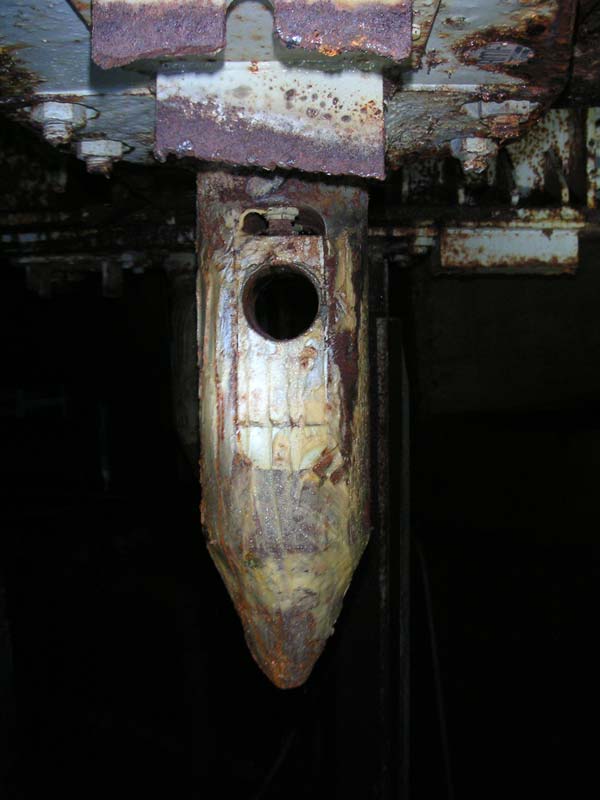
|
|
A
counterweight guide pin-- part of the counterweight to
drive base lock system. Here you can see how this
was very obviously hand-lubricated with heavy
grease. I cannot help but wonder whose hands made
those marks. Is he alive today? Who was it
who left this unassuming legacy in this forgotten, dark
place?
|
|
All
these years those pins had been greased and ready for another missile to
be emplaced in the silo-- a day I am certain will never arrive.
There it was again, that sudden feeling of presence in an utterly
dark and lonely place where now it is difficult to imagine bright lights
and a crew of men building, working and maintaining this once-modern
weapon of war that has since fallen to such a sad and lonely state.
|
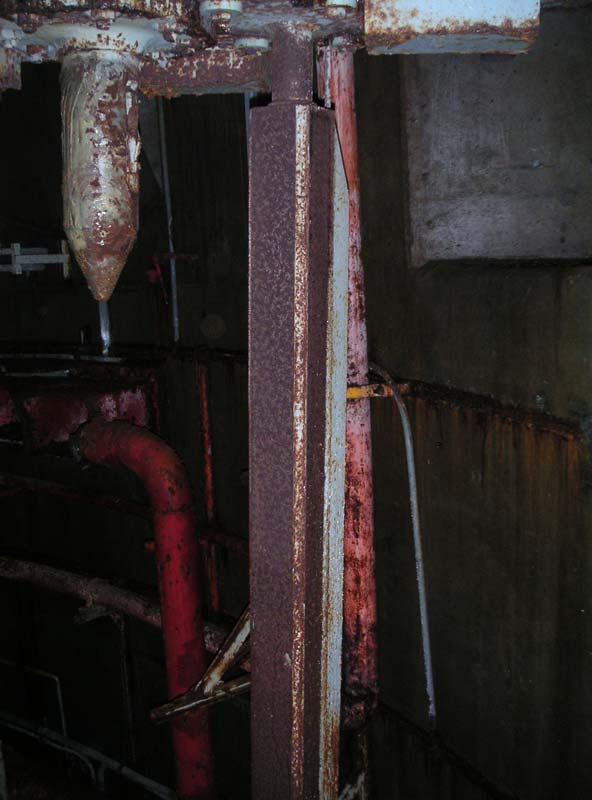
|
|
Guide
pin and counterweight stub rail-- located underneath the
launcher elevator motor platform. This photo was
taken from a spindly little service platform hanging
over empty space above the launcher silo.
Agoraphobes would not like this location, trust me.
|
|
|
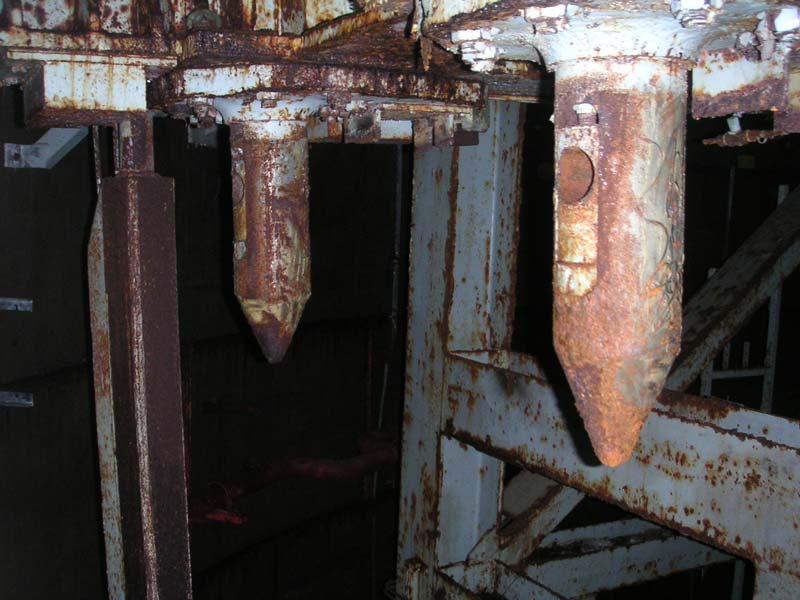
|
|
Two
of the four counterweight guide pins. These locked
the counterweights at the top of the silo when the
missile was in "hard" condition at the bottom
of the silo with the doors closed.
|
|
|
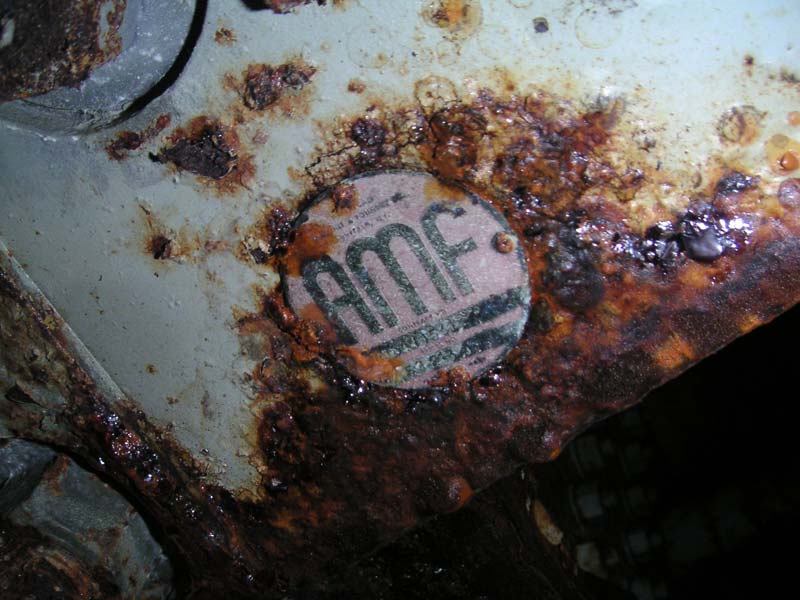
|
|
There
on that rickety platform, the seal of AMF barked loudly
from amidst the decay even as rust and time worked to
devour it.
|
|
Every
now and then, evidence, like whispers of ghosts, gave small clues about
the crews or workers from long ago. A concrete footer or pedestal,
once the base of a railing that was perhaps moved or raised as part of a
construction modification (I say "modification" because it
appeared to have been added after initial construction) bears some
inscriptions revealed under my lights.
|
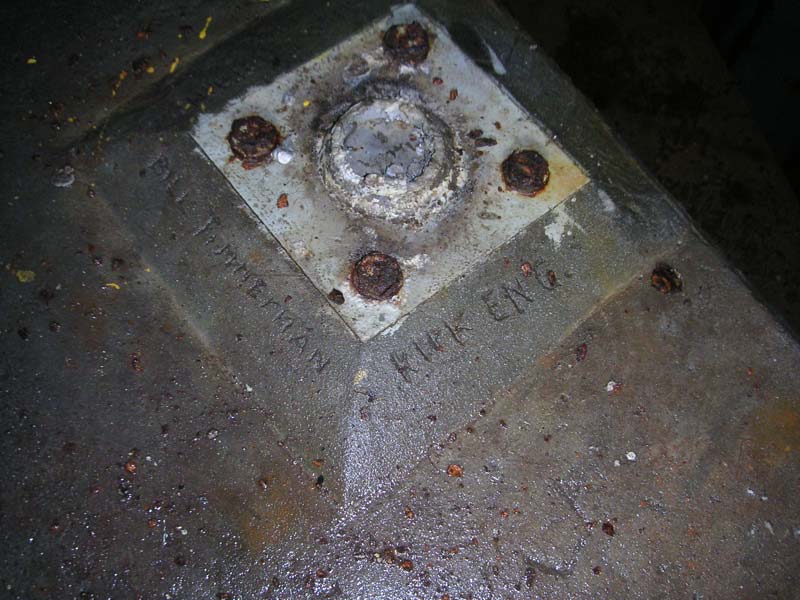
|
|
Scratched
into the concrete while it was still wet, this pedestal
reads: Silo Captain 1962 - Bill Timmerman - Kirk ENG.
|
|
|
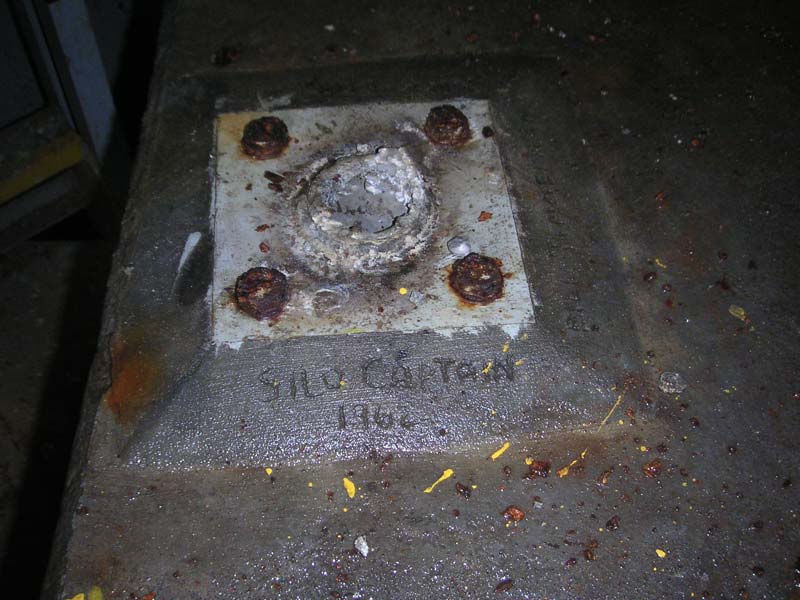
|
|
The
exact meaning of these words is unclear. Was it
signed by the silo captain in 1962 along with another
man named Bill Timmerman of Kirk Engineering, or was it
the captain, Bill T. and someone from Kirk Eng. leaving
the captain and the person from K.E.
un-named?
|
|
The
ghosts faded back into the shadows as we explored the last dark corners
of the last missile silo we would see at Larson 568-C. We both
knew our day at the Titan I complex was ending soon and we wondered what
time it was.
Was
it day or night outside?
We
were sure it must still be light, but deep down I think we just didn't
have confidence either way. We'd just have to wait and see.
|
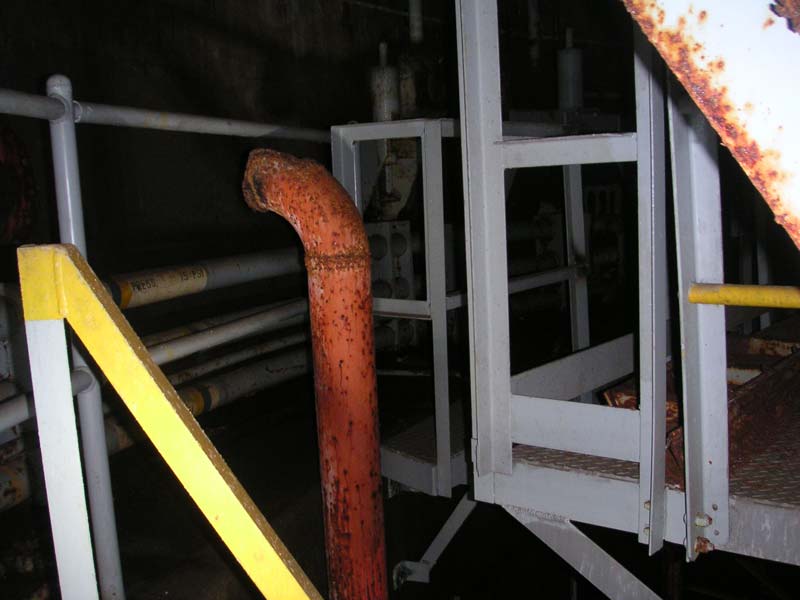
|
|
Piping
and platforms skirting the cribwork locking jacks at the
catwalk level.
|
|
This
lost sense of time made our exploration perhaps a bit more
hurried. We both wanted to look around on the surface a bit before
leaving. We hoped to find equipment taken from the underground
site laying about between the piles of junk that were blanketing the
ground over our heads in great heaps.
|
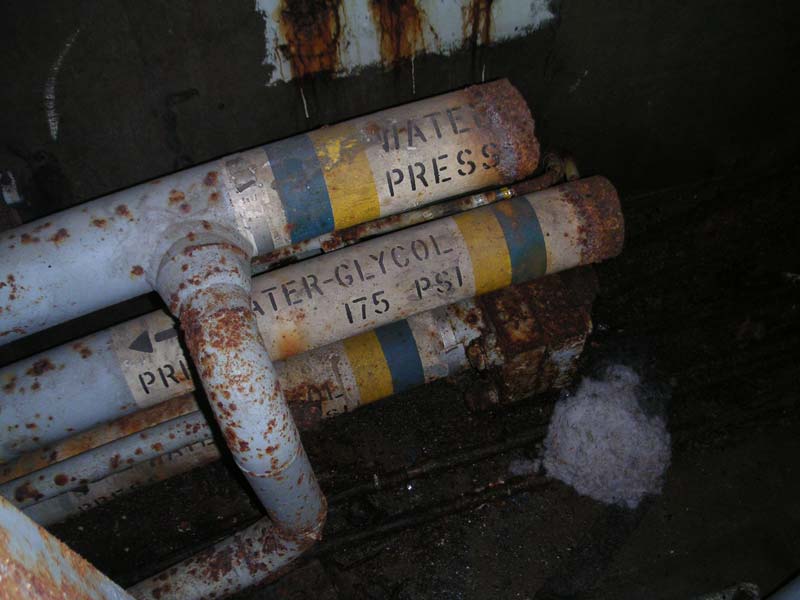
|
|
Hydraulics
at the catwalk level servicing the doors and cribwork
leveling locks. The curves follows the interior of
the silo walls.
|
|
I
took my parting shots as we prepared to climb back down to our damp
craft (this was about the time we had nearly dried off from the trip to
the silo!) and take to the quiet waters of the tunnels once more.
|
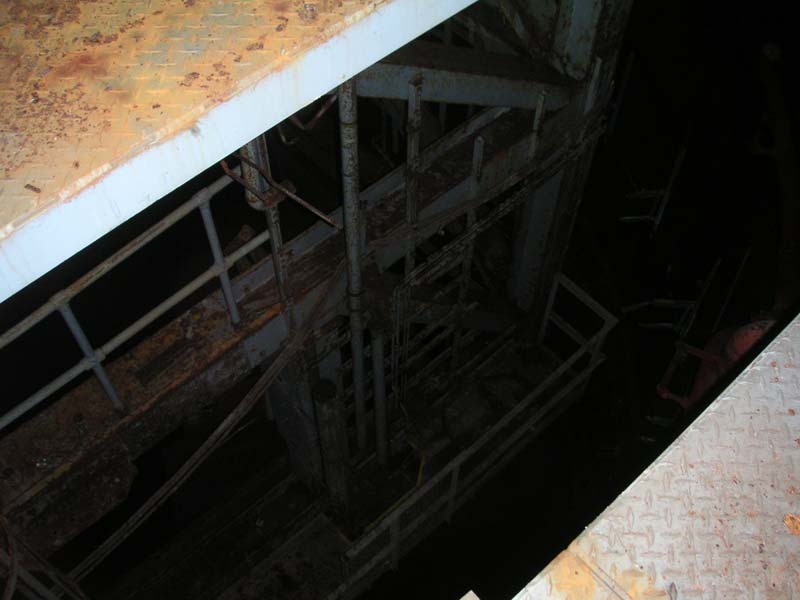
|
|
Looking
down at the cribwork from the catwalk level.
|
|
|

|
|
Top
of the cribwork at a confluence of hydraulic and
pneumatic lines of many sizes and running in all
directions.
|
|
As
we descended to the waterline, I got a few parting shots of silo #1 and
as fascinating and enthralling as my first trip to a site where cribwork
still populated the launchers, I felt a deep longing to see the rest of
it all-- to see a silo that wasn't inundated.
|
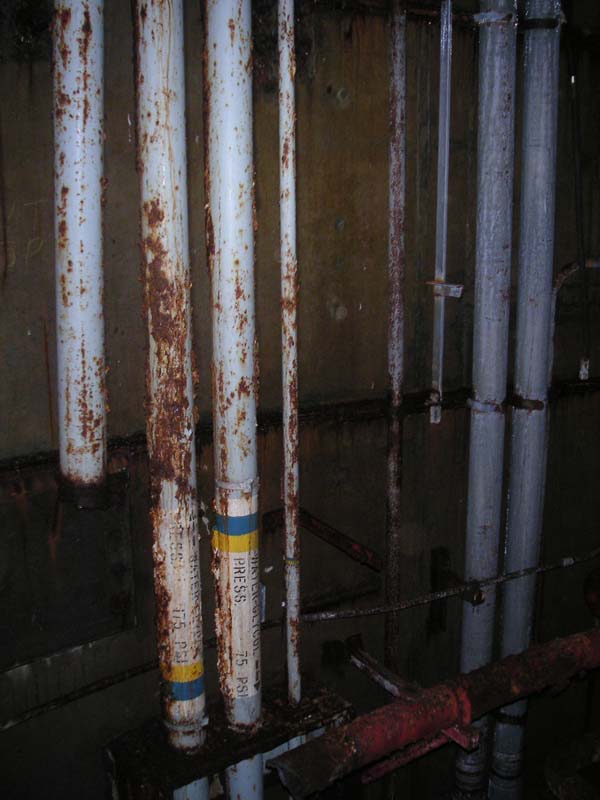
|
|
Hydraulic
lines for control of the elevator and silo doors and
other hydraulic services at the upper level of the
launcher.
|
|
Far
below more secrets lurked beneath the water. My mind swirled with
fantasies (likely far from truth) about what treasures might lay lost at
the bottom of these long abandoned silos. Some equipment
perhaps? Panels and controls from the nearby propellant and
equipment terminals discarded out of hand into the maws of the Titan?
It
was all too tantalizing for me and for Walter as well. We both
shivered to think about the prospect of seeing the last secrets of the
Titans and to go to the only places we had not-- could not, go.
|
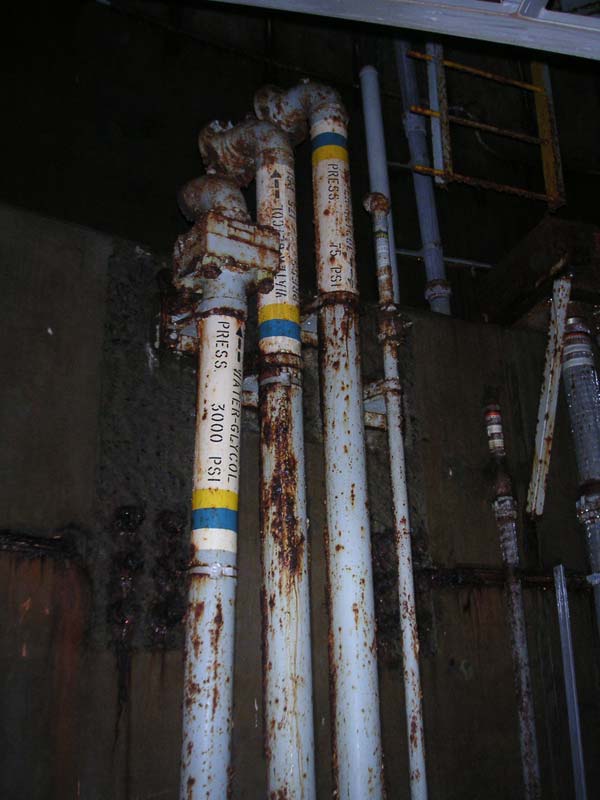
|
|
Hydraulic
supply and return lines routed up over the lip of the
catwalk level. These lines were about 4 inches in
diameter.
|
|
Departing
in relative silence compared to our excited entrance, we pored over the receding
levels of the cribwork, looking for anything we may have missed-- some
detail or landmark that might have escaped notice on our way up.
|
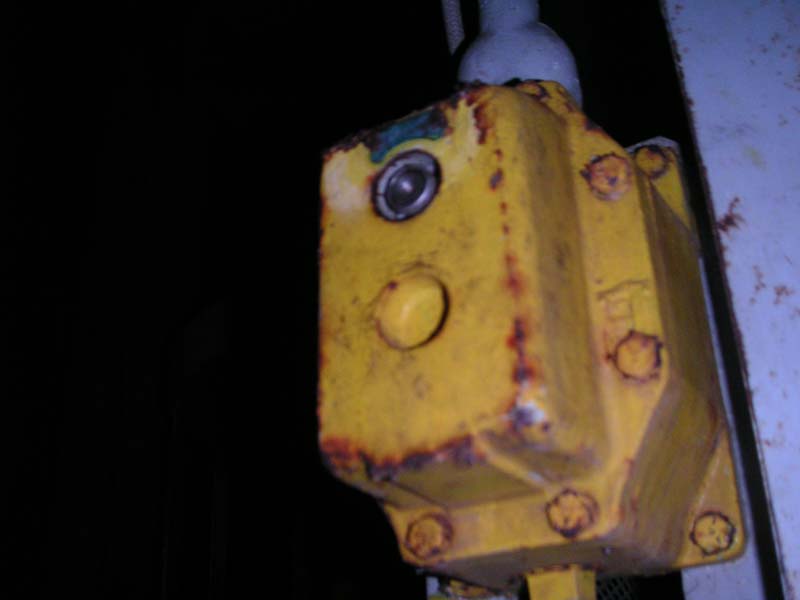
|
|
A
key control box for... Well, I'm not sure.
It could be for work platforms, an elevator call station
or some other function. We found this at the left
side of the silo-to-cribwork bridge at the personnel
tunnel level.
|
|
Finding
no great hidden mysteries, we carefully boarded our waiting craft and as
we drifted toward the exit, my eyes couldn't help but try to pierce the
darkness of the water below. What was down there, and would we
ever find out?
Tune
in soon for the next installment:
Part
Fourteen - As above, so below
|

